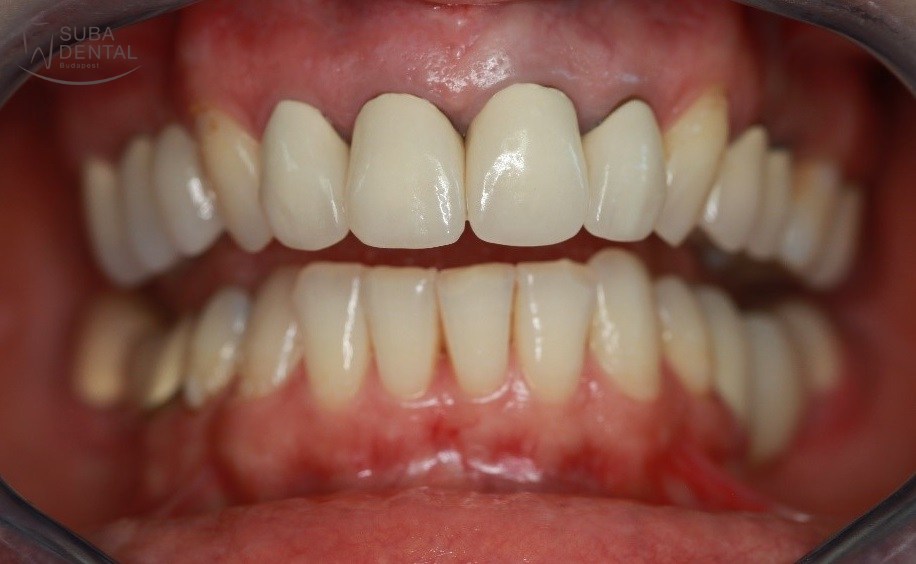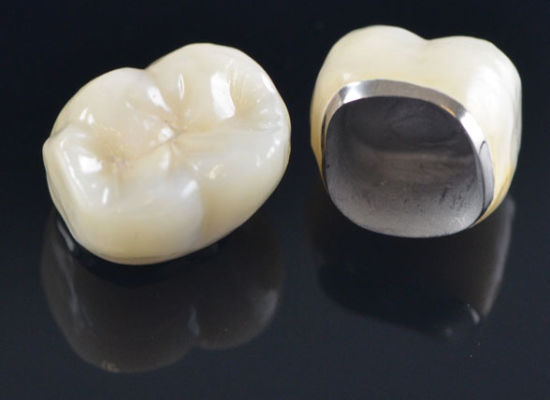PFM CROWNS AND BRIDGES
WHAT ARE PFM CROWNS
PFM crowns and bridges stand for Porcelain-Fused-to-Metal crowns. They are a type of dental crown used to restore damaged or weakened teeth. These crowns are made by fusing a layer of porcelain to a metal substructure, which provides strength and durability while also allowing for a natural-looking appearance.


DOWNSIDES OF PFM.
The combination of metal and porcelain makes PFM crowns a popular choice in dentistry, as they offer both strength and esthetics. However, it’s important to note that these crowns may have a slightly visible metal margin at the gum line, which can be a concern for some patients who prefer an all-ceramic crown without any metal showing.
With advancements in dental technology, all-ceramic or all-porcelain crowns have become more popular due to their superior esthetic appeal and elimination of any potential metal show-through. However, PFM crowns are still used in specific cases where their strength and durability are needed. The choice of crown material will depend on the individual’s dental needs and preferences, as well as the dentist’s recommendation based on the specific situation.
ADVNTAGES OF PFM.
Porcelain-Fused-to-Metal (PFM) crowns offer several advantages that make them a popular choice in certain dental situations. Some of the advantages of PFM crowns include:
1) Strength and Durability: PFM crowns combine the strength of the metal substructure with the natural-looking appearance of porcelain. The metal base provides excellent strength, making these crowns suitable for restoring heavily damaged or weakened teeth, especially in areas with high biting forces.
2) Natural Appearance: The porcelain layer of PFM crowns can be customized to match the color and shape of the patient’s natural teeth, providing a lifelike appearance. This makes them aesthetically pleasing and suitable for use in visible areas of the mouth.
3) Wear Resistance: The porcelain used in PFM crowns is highly resistant to wear and tear, which ensures the crown’s longevity and maintains its appearance over time.
4) Biocompatibility: The metal alloys used in the substructure of PFM crowns are generally well-tolerated by the body, making them biocompatible for most patients.
5) Versatility: PFM crowns can be used for both front and back teeth, offering versatility in restoring damaged or decayed teeth in various areas of the mouth.
6) Minimal Tooth Reduction: Compared to all-metal crowns, PFM crowns require less tooth reduction, preserving more of the natural tooth structure.
7) Cost-Effectiveness: PFM crowns are often more cost-effective than all-ceramic or all-porcelain crowns, making them a suitable option for patients on a budget.
8) Reliable Bonding: The metal substructure of PFM crowns allows for strong bonding with dental cement, providing a secure fit to the tooth.
Despite these advantages, it’s essential to consider that PFM crowns may have a slightly visible metal margin at the gum line, which can be a concern for some patients, particularly those with high esthetic expectations. In such cases, all-ceramic or all-porcelain crowns may be a more suitable choice. The decision on which type of crown to use depends on the individual’s specific dental needs and preferences, and it’s best made in consultation with a qualified dentist. Contact us for further necessary advice related to PFM crowns and bridges.

